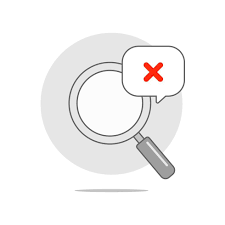The success of an e-commerce website depends on its usability, performance, security, and reliability. A seamless shopping experience ensures higher conversions, customer satisfaction, and repeat business. However, to achieve this, rigorous testing is crucial. Testing an e-commerce website involves various segments, each targeting a specific aspect of functionality and user experience. This article will explore the seven most essential types of testing for an e-commerce website and why they matter.
1. Functional Testing
Why It’s Important:
Functional testing ensures that all features of an e-commerce website work as intended. It verifies the functionality of different elements, such as product searches, add-to-cart features, checkout processes, and payment gateways.
Key Areas to Test:
- Product search and filters: Verify that users can find products easily using various filters.
- Shopping cart: Ensure items added to the cart remain there until removed.
- Checkout process: Test the complete checkout workflow, including address entry, payment, and order confirmation.
- Payment gateways: Validate payment processing across different methods (credit/debit cards, PayPal, digital wallets, etc.).
- User account functionalities: Verify login, registration, password reset, and profile updates work correctly.
- Order management: Test order placement, modification, and cancellation.
2. Performance Testing
Why It’s Important:
A slow or lagging website can lead to cart abandonment and lost sales. Performance testing ensures that the e-commerce website can handle high traffic loads and performs efficiently under different conditions.
Key Areas to Test:
- Page Load Speed: Ensure pages load within 2-3 seconds to prevent user drop-offs.
- Stress Testing: Test how the website behaves under peak traffic conditions (e.g., Black Friday sales).
- Scalability: Ensure the website can handle increased traffic without crashing.
- Database Performance: Test the response time of queries to ensure quick access to product listings and order details.
3. Security Testing
Why It’s Important:
Security is critical for e-commerce websites because they handle sensitive customer data such as payment details, personal information, and order history. Security testing ensures that user data is protected from threats.
Key Areas to Test:
- SSL Certificates: Ensure the website uses HTTPS to encrypt data transmissions.
- Data Protection: Test against SQL injection, XSS (Cross-Site Scripting), and CSRF (Cross-Site Request Forgery) vulnerabilities.
- User Authentication: Verify strong password policies and two-factor authentication (2FA) implementation.
- Payment Security: Ensure compliance with PCI DSS (Payment Card Industry Data Security Standard) for secure transactions.
- Access Control: Restrict unauthorized access to user accounts and admin panels.
4. Mobile Responsiveness Testing
Why It’s Important:
With most online shoppers using mobile devices, an e-commerce website must be fully responsive across different screen sizes and devices.
Key Areas to Test:
- Responsive Design: Check how the website adapts to different screen sizes (mobile, tablet, desktop).
- Touchscreen Compatibility: Ensure smooth navigation using touch gestures.
- Loading Speed on Mobile: Optimize performance for slower mobile networks.
- Cross-Browser Compatibility: Test across various browsers like Chrome, Safari, Firefox, and Edge.
- Mobile Payment Integration: Ensure mobile wallets like Apple Pay, Google Pay, and Samsung Pay work properly.
5. Usability Testing
Why It’s Important:
An intuitive and user-friendly interface ensures a positive shopping experience, reducing bounce rates and increasing conversions.
Key Areas to Test:
- Navigation & Layout: Ensure the website structure is easy to navigate.
- Product Pages: Check readability, image zoom functionality, and product descriptions.
- Checkout Process Simplicity: Ensure minimal steps are taken to complete a purchase.
- Customer Support & Live Chat: Test the accessibility and responsiveness of support features.
- A/B Testing for UX Improvements: Conduct tests on different design elements to determine what enhances user engagement.
6. Integration Testing
Why It’s Important:
E-commerce websites integrate with various third-party tools such as payment gateways, inventory management systems, and shipping providers. Integration testing ensures seamless interactions between these systems.
Key Areas to Test:
- Payment Gateway Integration: Ensure transactions are processed correctly by different providers.
- Inventory Management Systems: Validate real-time stock updates and syncing with external systems.
- CRM and Marketing Tools: Test integrations with email marketing platforms, chatbots, and analytics tools.
- Shipping and Order Tracking: Ensure order tracking updates function properly across logistics providers.
7. SEO & Accessibility Testing
Why It’s Important:
Search Engine Optimization (SEO) improves a website’s visibility in search engines, while accessibility ensures that people with disabilities can navigate it.
Key Areas to Test:
- SEO Compliance: Ensure proper meta tags, alt text for images, and structured data markup.
- URL Structure: Use clean, user-friendly URLs to enhance search rankings.
- Schema Markup: Test structured data for product pages to improve search engine visibility.
- Accessibility Compliance (WCAG): Ensure the site is navigable via screen readers and provides sufficient color contrast.
- Keyboard Navigation: Test whether users can access key features without using a mouse.
Conclusion
Testing an e-commerce website across these seven important segments ensures a seamless and secure shopping experience. From functional and performance testing to security, mobile responsiveness, usability, integration, and SEO/accessibility, each segment is crucial in optimizing an online store. By implementing a comprehensive testing strategy, businesses can enhance user satisfaction, boost conversions, and maintain a competitive edge in the e-commerce market.
By prioritizing these essential testing areas, your e-commerce website will be well-prepared to handle traffic, prevent security risks, and provide an optimal shopping experience for all users. Investing in thorough testing today leads to long-term success and customer trust in the digital marketplace.







